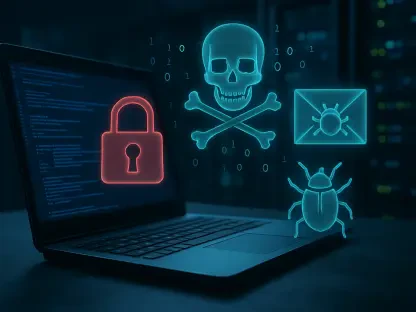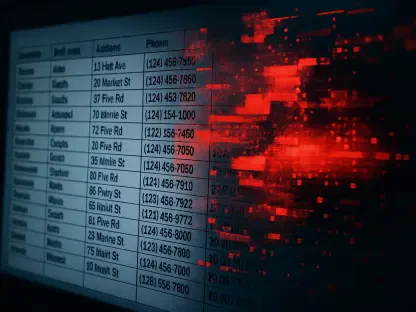Recent developments in cybersecurity have revealed a critical vulnerability in Cisco’s Smart Licensing Utility, which has been actively exploited in cyberattacks. This flaw, identified as CVE-2024-20439, involves the use of static credentials that allow unauthenticated attackers to remotely access vulnerable devices. The vulnerability was first disclosed and patched in September, along with another related flaw, CVE-2024-20440, which leads to information disclosure. Cisco’s Product Security Incident Response Team (PSIRT) confirmed exploitation attempts targeting CVE-2024-20439 earlier this year, aligning with observations from the SANS Internet Storm Center.
The Flaw and Its Discovery
The existence of CVE-2024-20439, a critical vulnerability in Cisco’s Smart Licensing Utility, has raised significant concerns within the cybersecurity community. This flaw allows attackers to remotely access vulnerable Cisco devices through an undocumented static administrative credential. The catch here is that the Cisco Smart Licensing Utility must be actively running for the vulnerability to be exploited. This aspect has magnified the challenge for organizations using Cisco products, emphasizing the necessity for immediate attention and remediation to safeguard their networks.
Johannes Ullrich from the SANS Internet Storm Center highlighted exploitation attempts originating from a smaller botnet, which tapered off after a noticeable spike in activity. His observations not only contributed to the Cybersecurity and Infrastructure Security Agency (CISA) including the flaw in its known exploited vulnerabilities catalog, but also spotlighted the considerable risks associated with static administrative credentials. The detailed insights provided by security researcher Nicholas Starke in a blog post further underlined the technical intricacies of CVE-2024-20439, shedding light on how such credentials could be used nefariously.
Exploitation and Response
Following the discovery of CVE-2024-20439, Cisco’s confirmation of exploitation underscores the immediate need for addressing such critical flaws. Considering the potential for significant security breaches and unauthorized access, the company’s confirmation highlights the ever-evolving landscape of cyber threats. Johannes Ullrich’s findings pinpointed a smaller botnet’s exploitation attempts in mid-March, which, after initial spikes, started to decline. This trend suggests that while the immediate threat level may have subsided slightly, the underlying vulnerability still presents a substantial risk.
Moreover, the acknowledgment that these static admin credentials, sometimes referred to as “backdoors,” are frequently employed by Cisco invites discussions about the broader implications of such practices. The cybersecurity community and organizations relying on Cisco’s technologies are now faced with the challenge of reassessing their security measures and ensuring all possible entry points are secured. This heightened awareness and response are critical to staving off future exploitation attempts and minimizing the impact of such vulnerabilities on sensitive data and systems.
Ongoing Efforts to Mitigate Risks
The critical nature of CVE-2024-20439 has spurred a concerted effort to mitigate the associated risks. Cisco’s proactive approach in disclosing and patching the vulnerability, accompanied by warnings from experts like Ullrich and Starke, underscores the collaborative effort required to address cybersecurity challenges. The inclusion of the flaw in the CISA catalog further emphasizes the severity of the vulnerability and the need for immediate and continuous vigilance.
Organizations must prioritize timely updates and patches to their Cisco devices, ensuring the Smart Licensing Utility is secured against unauthorized access. Beyond the technical fixes, there is also a necessity for an ongoing strategy that involves regular security audits, employee training, and an adaptive response plan to emerging threats. This comprehensive approach can help maintain a robust cybersecurity posture, preventing threats from exploiting known vulnerabilities.
Key Takeaways and Future Considerations
Recent advancements in cybersecurity have uncovered a significant vulnerability in Cisco’s Smart Licensing Utility, actively exploited in recent cyberattacks. This flaw, cataloged as CVE-2024-20439, entails the use of static credentials, enabling unauthenticated attackers to remotely access compromised devices. Initially disclosed and addressed in September, this vulnerability was patched alongside another related flaw, CVE-2024-20440, which permits information leakage. Cisco’s Product Security Incident Response Team (PSIRT) has confirmed attempts to exploit CVE-2024-20439 earlier this year, which aligns with findings from the SANS Internet Storm Center. Both vulnerabilities highlight the ongoing challenges in securing network devices, emphasizing the need for improved safeguards and prompt patching to protect against emerging threats. In response, Cisco has urged users to apply the latest updates to mitigate risks associated with these vulnerabilities.









